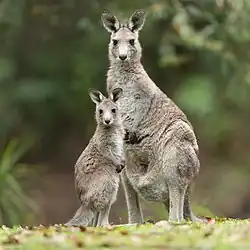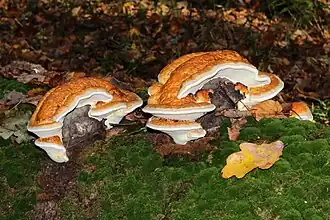Bosh sahifa
Vikiturlarni oʻrganing
- YORDAM bo'limi – Sahifalar yaratish bo'yicha batafsil ma'lumot.
- Taksonomiya – Turlarning Linney tasnifi haqida ma'lumot.
- Village Pump – Loyihani muhokama qiling.
- Bajarildi va Bajariladi – Batafsil sohalar va belgilangan kelajakdagi maqsadlarga havolalarni ko'ring
- Vikiturlar KSS – Umumiy xavflarga yechimlarni tekshiring.
- Tasvir bo'yicha ko'rsatmalar – Rasmlarni qayerga yuklash bo'yicha tavsiyamiz
- Vikiturlar PR – Vikiturlarni ommalashtirish orqali bizga yordam bering
ZooKeys bilan hamkorlik
Vikiturlar va ZooKeys o'rtasidagihamkorlik e'lon qilindi. PhytoKeys ham 2010-yil noyabr oyida hamkorlikka qoʻshilgan. ZooKeys va PhytoKeys turlarining rasmlari Wikimedia Commonsga yuklanadi va Vikiturlarda foydalaniladi.
Hurmatli muallif

Mary Agnes Chase
1869–1963. Standard IPNI form: Chase
Mary Agnes Chase, née Merrill, was an American botanist who worked at the U.S. Department of Agriculture and the Smithsonian Institution. She is considered one of the world's outstanding agrostologists and is known for her work on the study of grasses, and also for her work as a suffragist. Chase was born in Iroquois County, Illinois and held no formal education beyond grammar school. That aside, she made significant contributions to the field of botany, authored over 70 scientific publications, and was conferred with an honorary doctorate in science from the University of Illinois. She specialized in the study of grasses and conducted extensive field work in North- as well as and South America. Her Smithsonian Field Books collection from 1897 to 1959 is archived in the Smithsonian Institution Archives.
In 1901, Chase became a botanical assistant at the Field Museum of Natural History under Charles Frederick Millspaugh, where her work was featured in two museum publications: Plantae Utowanae (1900) and Plantae Yucatanae (1904). Two years later, Chase joined the U.S. Department of Agriculture (USDA) as a botanical illustrator and eventually became a scientific assistant in systematic agrostology (1907), assistant botanist (1923), and associate botanist (1925), all under Albert Spear Hitchcock. Chase worked with Hitchcock for almost twenty years, collaborating closely and also publishing, for instance The North American Species of Panicum (1910).
Following Hitchcock's death in 1936, Chase succeeded him to become senior botanist in charge of systematic agrostology and custodian of the Section of Grasses, Division of Plants at the United States National Museum (USNM). Chase retired from the USDA in 1939, but continued her work as custodian of the USNM grass herbarium until her death in 1963. She was an Honorary Fellow of the Smithsonian Institution (1959) and Fellow of the Linnean Society of London (1961). Agnesia is named in her honour (a monotypic genus of herbaceous South American bamboo in the grass family).
Chase experienced discrimination based on her gender in the scientific field, for example, being excluded from expeditions to Panama in 1911 and 1912 because the expedition's benefactors feared the presence of women researchers would distract men. During World War I, Chase marched with Alice Paul and was jailed several times for her activities. In 1918, she was arrested at the Silent Sentinels rally picketing the White House; she refused bail and was held for 10 days, where she instigated a hunger-strike and was force-fed. The USDA accused her of "conduct unbecoming a government employee," but Hitchcock helped her keep her job. Chase was also an active member of the National Association for the Advancement of Colored People (NAACP).
See also: Distinguished authors of previous months.Species of the month
Common European Glowworm

Lampyris noctiluca (Linnaeus, 1758)
Some facts about this beetle:
Average Size: The adult female is 12–20 mm long, while males rarely grow longer than 10 mm. The larvae are often only a few milimeters long.
Protection status: Not assessed.
Diet: Even though they are small in size the larvae are fierce carnivores, roaming leaf litter in search of tiny slugs and snails. Adults rarely feed at all.
Range: From Portugal and Britain in the west, right across Europe and Asia to China in the east. It also survives further north than any other firefly, almost reaching the Arctic Circle. For example, it is fairly common in south- and central Sweden and southern Finland.
Strange fact: The light of this firefly is actually cold light, producing very little wasted heat. When glowing only 2–10 percent of the energy is wasted as heat, while a whopping 90–98 percent of the energy is converted into light. This makes the process much, much more energy efficient than any light sources ever manufactured by humans.
Vikiturlar boshqa tillarda
- Aceh
- Afrikaans
- Aragonés
- Ænglisc
- अंगिका
- العربية
- الدارجة
- অসমীয়া
- Asturianu
- Azərbaycanca
- Basa Bali
- Boarisch
- Беларуская
- Български
- بلوچی
- বাংলা
- Brezhoneg
- Bosanski
- Català
- Нохчийн
- Čeština
- Cymraeg
- Dansk
- Deutsch
- Zazaki
- Ελληνικά
- English
- Esperanto
- Español
- Eesti
- Euskara
- فارسی
- Suomi
- Føroyskt
- Français
- Nordfriisk
- Galego
- Ἑλληνική
- Alemannisch
- עברית
- हिन्दी
- Hrvatski
- Kreyòl ayisyen
- Magyar
- Հայերեն
- Interlingua
- Bahasa Indonesia
- Íslenska
- Italiano
- 日本語
- Basa Jawa
- ქართული
- қазақша
- 한국어
- Ripoarisch/Kölsch
- Кыргызча
- Македонски
- молдовеняскэ
- मराठी
- Bahasa Melayu
- Mirandés
- မြန်မာဘာသာ
- مازرونی
- Norsk bokmål
- Neadersassisk
- नेपाली
- Nederlands
- Nynorsk
- Occitan
- ଓଡ଼ିଆ
- ਪੰਜਾਬੀ
- Polski
- Português
- Runa Simi
- Română
- Русский
- ᱥᱟᱱᱛᱟᱲᱤ
- Sardu
- Sicilianu
- Scots
- සිංහල
- Slovenčina
- Slovenščina
- Српски
- Srpski
- Sunda
- Svenska
- ꠍꠤꠟꠐꠤ
- Ślōnski
- தமிழ்
- Тоҷикӣ
- ไทย
- Tagalog
- Türkçe
- ئۇيغۇرچە
- Українська
- Oʻzbekcha/ўзбекча
- Veneto
- Tiếng Việt
- Volapük
- მარგალური
- ייִדיש
- 粵語
- 简体中文
- 繁體中文



_by_Nick_Hobgood.jpg)


_mating.jpg)